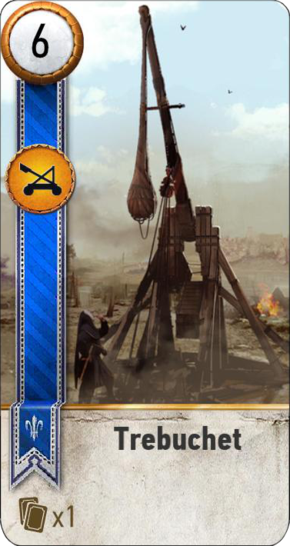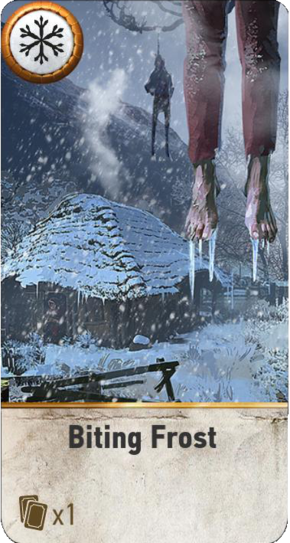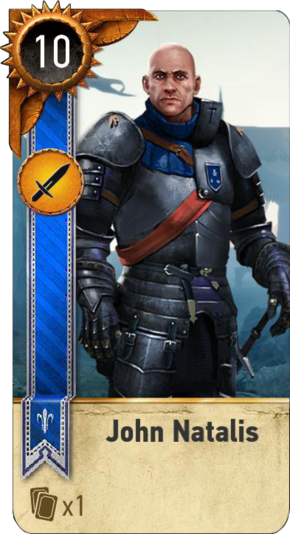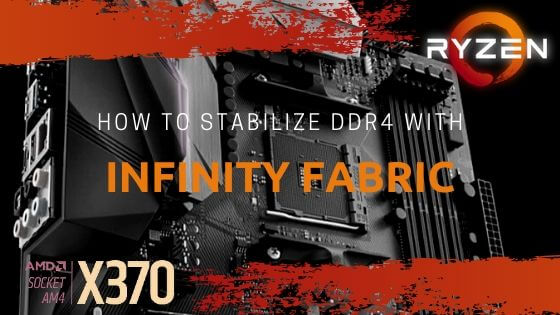This is a tips and tricks guide for RogueTech, a modded version of the BattleTech game covering inspired by the Mech Warrior universe. RogueTech adds a layer of difficulty to the original BattleTech game. Since so little information can be found, this guide is written with a range of tips and tricks to give new players a more leisurely start. Also included in this guide, are some mech builds with pictures and some build advice, in general, to illustrate design choices when building a mech. At the time of writing this guide, I have well over 600 in-game hours this covers the original BattleTech game and the RogueTech modded version of the game and thought I share my experience with the RogueTech community.
Where to start?
Initially, you will have to farm missions of 1 skull and lower to gain more equipment and C-Bills(in-game currency)as well as gaining reputation with all factions to gain access to higher tier missions. The mission part will be tricky in a sense you do not want to drop reputation with one faction to gain reputation with another faction. However, the easy workaround is that you gain more reputation than lose reputation when you do a mission to ensure that if you do a mission against a faction, your reputation does not dip too far before taking on a mission. Furthermore, you can do missions against the "Planetary Government" that will affect no reputation loss at all so ensure you do those missions first. In short gain reputation before losing reputation to unlock higher tiered missions.
I started in the Clan area as it gave me a small reputation boost and access to the Clan stores to get more Clan gear while doing missions at the same time and gaining some more clan equipment and mech parts through salvage. This allowed me to get ahead started early in the game and made my overall playthrough easier over beginning in the Inner Sphere.
Clan Gear.
Clan gear is in most cases best in the slot for all weapons and equipment, and it will use fewer slots and weigh less while having increased performance. This will allow you to fit more weapons and equipment, giving your Mech thus lance more damage output. At times Clan gear might give off more heat so make sure to balance those out with overall damage vs heat generation.
RISC Gear.
Is Innersphere experimental tech that offers even more benefits then Clan Gear, it is however scarce, and only appears as salvage always. RISC gear should be priority salvage even over mech parts since RISC gear is that rare. Due to the weight savings, this will make it easier to outfit medium and heavy mechs and will retain better damage output.
Prototype Heatsink Kit & Prototype Double Heatsinks.
These are by far best in cooling performance and allow you to build insane Omni Mechs(assault Class) with over 600 sustained damage. The Heat Sink kit converts all the Engine Heatsinks and Additional Engine Heatsinks into Prototype Heatsinks and allows you to install more Prototype Double Heatsinks. While they only sink -4 heat per turn, they also lower heat output from weapons by 4% per heatsink, increase your overheat threshold by 4 per Prototype Heatsink and your maximum heat by 4 per Prototype Heatsink. Therefore Prototype Heatsinks and Kits are a MUST salvage above everything else unless you already have more than 10 of each. Even just installing the Prototype Kit will benefit you by having the benefits mentioned earlier on the Engine Heatsinks saving you tonnage and slot space to fit more gear. I personally never use any other type of Heat Sinking than Prototype that is how good it is.
The Basics.
There are several ways to increase tour performance that do not involve direct damage output. E.C.M. and Sensors are very important and will help with your overall accuracy and prevent you from being jammed. Acid munition will help you increase damage output in the next round. And at the same time overheating a hostile mech with special incendiary munition can shutdown a mech and allow you to take it out via headshot. T.S.E.M.P., Chaff L.R.M., and Chaff countermeasures will debuff targets even further while T.A.G., NARC launchers and L.R.M. Narc will aid in detection and counter E.C.M. As well as limb mods that that either decrease recoil, increase accuracy and improve melee and stability damage dealt and last, are Stealth systems combined with E.C.M. will make it harder to be hit and detected.
ECM & Sensors.
There are various Sensors and E.C.M. suites that will Buff your Mechs and Debuff the enemy Mechs. Buffs come in forms like increased sensor detection range, Increased visual range, Lower sensor signature for making it harder to be electronically detected, Increased sensor checks to counter stealth and E.C.M., as well depending on the suite you can get a UAV, C3 Master/Slave functionality, etc. The Debuff comes in the form jamming enemy sensors checks decreasing detection or prevent detection altogether. Listed below are my four go-to E.C.M. and Sensor suites.
- Guardian E.C. M(C): -2 Accuracy debuff, 2 Sensor buff for friendlies, 2 Sensor debuff.
- NOVA CEWS(C): 10% Increased sensor range, 10% Visual range, +1 Resolve gain per turn, -1 Accuracy debuff, 1 Sensor buff for friendlies, 2 Sensor debuff, C3 Networking.
- WatchDog Suite(C): 20% Increased sensor range, 15% Increased visual range, +1 Defense, -50% Electronic signature, 2 Sensor buff for friendlies, 3 Sensor debuff, 3 Additional sensor checks, UAV with a 4 turn cooldown.
- Warfare Suite: 15% Increased sensor range, 20% Increased visual range, -1 Accuracy debuff, -10% Electronic signature, 3 Sensor buff for friendlies, 2 Sensor debuff, 2 Additional sensor checks, UAV with a two-turn cooldown.
The whole purpose of this equipment is to make you harder to hit while making it easier for you to hit your opponent and finding units that might be in stealth mode and sharing all that data among friendlies. Do not underestimate jamming mostly when some medium mechs can close in and can only be spotted when in visual range but then it is too late they can field alpha strikes over 300 damage that will kill most Heavy Mechs and severely damage Assault mechs.
Special Munitions.
There is a wide range of special munitions in RogueTech, but I only prefer to use some since the pros and cons of most munitions do not make up the redux in damage output. A by far must is the acid munitions you can use on S.R.M.'s or Mortars, and I only use S.R.M.'s or Mortars for the most part to round of some D.P.S. and add acid attacks. The difference between the S.R.M.'s and Mortar is that the Acid attack stacks on the S.R.M.'s but does not appear on the Mortar furthermore the Mortar adds an acid debuff for 20% but does not stack while the S.R.M. acid munition only adds 1% debuff per missile but does stack. The 2nd munition to recommend is the Incendiary munition. Still, I only use this in specialized builds that are fully geared towards overheating targets I will cover that more in-depth later on in this article. And the 3rd option is either an increase in accuracy for long-range of stability damage in short-range builds. For long-range L-K LRM missiles that have increased accuracy, Deathfire L.R.M.'s do increased damage and stability damage, and Thunder/Thunder Augmented L.R.M.'s lay mines handy when taking on light mechs. And for short-range, the Tandem S.R.M.'s are great vs light, and medium mechs and Deathfire S.R.M.'s as the L.R.M. counterpart does increase damage and stability damage. But selecting those munitions will depend entirely on your build and lance setup.
L.R.M. Munitions.
- L-K LRM: +1 Accuracy, +35% Intercept chance by A.M.S.
- LRM [INC]: +1 Heat - 2 LRM Damage.
- LRM DF: +50% LRM Damage +1 Stability Damage -40% Range, -1 Accuracy.
- L.R.M. Thunder: -3 L.R.M. Damage, 1 Mine per missile.
- L.R.M. Thunder Augmented: -3 L.R.M. Damage, 2 Mines per missile.
S.R.M. Munitions.
- SRM AX: +1% Damage for 2 turns and does stack.
- SRM Tandem: +4 Damage to internals, -4 SRM damage.
- SRM DF: +50% SRM damage, +2 Stability damage, -1 Accuracy.
Haywire(TSMEP) & Chaff.
Haywire and chaff will debuff enemy mechs and will include one or more of the following, impaired movement, accuracy, heat management, sensor strength, and visual range. This can be very helpful to decrease damage output, taking on higher difficulty missions. It can also aid with farming for mech parts and equipment if you use the heat management debuff paired with incendiary munitions to force a shutdown and then take out the Mech with a headshot allowing the entire Mech to be salvaged. Another great application is for melee mechs that do not need weapons as they are centred around melee damage thus closing in and applying debuffs and then going in for the melee kill the next turn is very useful.
Haywire: 4 different equipment types can apply this Debuff to enemy mechs but vary in strength.
- T.S.E.M.P. Cannon: 30 Heat, 60% Movement reduction for two turns, -3 Accuracy for two turns, -80% Heat management for two turns, Uses support weapons hardpoint thus fires in melee attacks.
- NARC Haywire: 0 Heat, 15% Movement reduction for two turns, -1 Accuracy for two turns, -20% Heat management for two turns, Use support weapons hardpoint utilizing the NARC Launcher an ammo based weapon but does NOT fire in melee.
- Taser: 10 Heat, 40% Movement reduction for two turns, -2 Accuracy for two turns, -50% Heat management for two turns, Uses ballistic weapon hardpoints utilizing the Taser an ammo based weapon and does NOT fire in melee.
- IATM EMP: 10% Movement reduction for 2 turns, -1 Accuracy for 2 turns, -10% Heat management for 2 turns, IATM munition and stacks up to 6 times.
Chaff: 2 different munitions that apply a debuff of varying strength to an enemy mech.
- Chaff CounterMeasures: -1 Accuracy for two turns, -30% Sight reduction for two turns, -60% Sensor strength for two turns, Area of effect weapon, Uses internal munition storage, Uses support weapon hardpoint thus fires in melee attacks.
- LRM Chaff: -1 Accuracy for 2 turns, -20% Sight reduction for 2 turns, -30% Sensor strength for 2 turns, LRM munition can be fired indirectly.
T.A.G. & NARC.
T.A.G. & NARC beacons allow for more significant target acquisition for the entire lance and work regardless of the usage of C3 networking, best-used with spotting/recon, and melee mechs and is especially useful to support L.R.M. builds.
- T.A.G.: +7 Sensor checks counter E.C.M., +1 Accuracy 2 turn duration, 15% Increased electronic detection for two turns, 15% Increased visual detection for two turns, Uses support weapon hardpoint but does not fire in melee.
- Light T.A.G. (C): +8 Sensor checks counter E.C.M., +1 Accuracy 2 turn duration, 20% Increased electronic detection for two turns, 20% Increased visual detection for two turns, Uses support weapon hardpoint but does not fire in melee.
- NARC Beacon: +8 Sensor checks counter E.C.M., +1 Accuracy 2 turn duration, 25% Increased electronic detection for two turns, 25% Increased visual detection for two turns, Uses support weapon hardpoint but does not fire in melee.
- NARC I-Beacon: +12 Sensor checks counters E.C.M., +1 Accuracy +2 Missile Accuracy 2 turn duration, 35% Increased electronic detection for two turns, 35% Increased visual detection for two turns, Uses support weapon hardpoint but does not fire in melee.
Limb Modifications.
There is a wide range of limb modifications that aid with accuracy, recoil management, melee damage and perks like C.A.S.E. and damage reduction. I wouldn't say I like using all of them since some of them would involve taking internal damage. However, recoil management can be instrumental on Ultra A.C., and Rotary A.C. builds as well as they suffer the most from Recoil over P.P.C. and Gauss weapons. Accuracy helps with any build but is best served in long-range builds, Omni Mech prevents the usage of A.C. type, and P.P.C. type weapons thus are ill-suited for long-range builds. Melee mods are suitable for your melee builds and should only be used to unique purpose build melee mechs. Listed below is a range of mods I frequently like to use.
Weapon Mods:
Adds one or more of the following specs in various degrees, Recoil Reduction, Increased Accuracy, Increased Firing Arc. However, they take up slots space and will also come at a tonnage price.
- Omni Pod Lower Arm: +1 Accuracy, +10% Melee damage, but cannot be used with Ballistic or P.P.C. weapons.
- Weapon Mount: +* Accuracy depending on the mod quality, -* Recoil depending on the mod quality, +*% Firing arc depending on mod quality, -* Melee accuracy depending on the quality of the mod, Uses the lower limb slot +1 extra slot.
- UpperRecoil: +* Accuracy depending on the mod quality, -* Recoil depending on the mod quality, Uses the upper limb slot.
Melee Mods:
Adds one or more of the following specs in various degrees, Melee Accuracy, Melee Damage, Stability Damage, reduced Melee Damage taken.
- Upper Spiked: -*% Melee damage taken depending on mod quality, +*% Melee damage depending on mod quality, CASE protection.
- Lower Melee: +* Melee accuracy depending on mod quality, +*% Melee damage depending on mod quality, +*% Stability damage depending on mod quality.
- Leg Spiked Boots: +* Melee accuracy depending on mod quality, +*% Melee damage depending on mod quality, +* Base melee damage depending on mod quality.
- Hands Melee: +* Melee accuracy depending on mod quality, +*% Melee damage depending on mod quality, +*% Stability damage depending on mod quality.
Blades, Claws, and Shields:
Adds a big bonus to melee some of these come pre-attached with the Mech and offer an even better bonus in a melee centric mech. They can be fitted on the specific limb it is designed for and only take up slot space below a list of some of my favourite mods that can be equipped additional to pre-attached melee mods.
- Claws: +2 Melee accuracy, +40% Melee damage, +10 Base melee damage, +25% Stability damage, +50% Critical chance, replaces the mech hand actuator.
- Retractable Blade: +2 Melee accuracy, +15% Melee damage, +5 Base melee damage, +10% Stability damage, +25% Critical chance, replaces the mech hand actuator.
Melee Mods slot specific:
These melee mods will use a support weapon slot and add more melee damage as well as in some cases being able to fire outside and inside melee attacks. They take up a support weapons slot and slot space on the Mech.
- T.S.E.M.P.: 5 Damage, 30 Heat, Haywire E.M.P. nerfs movement, accuracy, and heat sinking on target.
- Chainsword: 5 x 12 Damage, 5 x 7 Stability damage, + 2 & +1 Melee accuracy, 20% Critical hit chance.
- Hammerfist: 3 X 25 Damage, 3 x 10 Stability damage, +1 Melee accuracy, +10 Stability Damage.
- Plasma Lance: 50 Damage, 25 Heat, 15 Stability damage, + 1 Melee accuracy, x2 Critical hit chance, +5 Base melee damage.
- Wrecking Ball: 60 Damage, 60 Stability damage.
- Flail: 3 x 35 Damage, 3 X 25 Stability damage, +1 Melee accuracy, 120% Critical hit chance.
Stealth.
Stealth systems are an armour mod that makes it harder to be detected either electronically and or visually and always requires an E.C.M. module to be installed. Very useful for brawler and melee builds to face tank hostile mechs. However, armour repairs are very expensive as well as the system generates heat and also increase the generation of weapon heat. Of all the stealth systems to prototype systems are of the highest quality and offer the greatest bonus.
- Null Signature System(NSS): 30% Sensor stealth, 5 Stealth charges, +2 Defense medium-range, +4 Defense long-range, +6 Defense extreme-range, -70% Sensor signature, +15% Weapons heat, +10 Heat per turn, Electronic stealth only.
- Void System: 20% Visual stealth, 6 Stealth charges, -70% Visual signature, -15% Sensor signature, +10% Weapons heat, +10 Heat per turn, Visual stealth only.
- Signature Damper: 60% Sensor stealth, 2 Stealth charges, +1 Defense medium-range, +2 Defense long-range, +3 Defense extreme range, -35% Sensor signature, +5% Weapons heat, +3 Heat per turn, Visual stealth augmentation adds Electronic stealth to Visual Stealth systems like the Void System.
- Active Camouflage: 30% visual stealth, 4 Stealth charges, -40% Visual signature, +10% weapons heat, +5 Heat per turn, Sensor stealth augmentation adds Visual stealth to Electronic stealth systems like N.S.S.
Lances & Mechs.
In this portion, I will cover various builds and lance setups to give you some inspiration for your playthrough in RogueTech. There will be a range of builds to cover all your needs but you, of course, iterate upon this and tinker on your builds. Also important to note here is that I only save up mechs that are the max tonnage in their weight class, so 35-ton parts for light mechs, 55-ton parts for medium mechs, 75-ton parts for heavy mechs and 100-ton mech parts for the assault mechs. For the end-game in RogueTech, I only use one medium lance, one heavy lance and two lances of assault mechs. Tonnage selection per class was merely based on the max amount of gear per mech class, so I was able to fit the max amount of equipment.
Melee Builds.
I only use an assault, and medium Mech for melee builds in my current lance setups since I switched to overcooking mechs so I can salvage more equipment and parts. Melee mechs are great for one strike killing mechs, but it tends to completely wreck one side torse/arm and leg doing so. Great for lower-tier missions that yield little to no useful salvage or higher tier assault missions for quick playthroughs. Below two screenshots of my Barbarian medium melee mech and my Berserker assault melee mech.
Barbarian(HCT-S7) Medium Melee Mech.

Berserker(BRZ-A3) Assault Melee Mech.

The big difference I emphasize the assault melee mech to have stealth so it will take less damage then the medium that has some more tanking function to it also the shield mod on this medium frame has an increased sensor signature penalty so adding stealth would make little sense. As well as adding chaff to reduce sensor and visual detection and flamers and T.S.E.M.P. to overheat and nerf damage output on my targets. Furthermore, I added mods to increase to walk and run distance so I can close in faster per turn, giving any hostile mech little to no chance of escaping.
Mech cookers.
These are speciality build mechs I use to gain more salvage per-mission by overheating a mech I want to salvage as a whole or in part. This centres around doing little to no damage to the Mech but overheating forcing a shutdown forced mech pilot ejection due to panic, or a called heat shot on a shutdown mech due to overheating. Stealth is added to avoid damage because brawlers tend to get flanked and shot in the back and on high-end missions that can result in a one-shot kill. I also added lance A.M.S. in the form of Advanced A.M.S. to reduce incoming L.R.M. damage for the whole lance as well to free up tonnage on the rest of the lance for increased performance. Below two screenshots of my Asura heavy mech cooker and Dire Star assault mech cooker.
Asura(MDG-X) Heavy Mech Cooker.

Dire Star(DS-Prime) Assault Mech Cooker.

Both builds are almost identical with the Asure being a very rare Solaris brawler and the Dire Star is a rare version of the Dire Wolf Omni mech the only downside to the Dire Star due to the fact it is an Omni mech it can not use the regular arm mods. The Omni pod will not work with P.P.C. type weapons like the T.S.E.M.P. Cannons, However, as an Omni mech, it will allow for more weapon tonnage to be added thus giving a far greater heat output. For the Asura, the weight restriction won't allow for 2 T.S.E.M.P. cannons to be fitted, but that is fixed by using a NARC Launcher(C) with beacons and haywire making it easier taking on medium and light mechs. The E.C.M. or cockpit mods will share sensor data through C3 functionality with the rest of the lance.
Long & Extreme Range Snipers.
Purpose build Mech for long to extreme ranges engagements due to the nature of the long to extreme range builds it is vital to have C3 networking make use of T.A.G. or NARC beacons for successful engagements. A downside to long to extreme range builds is that those weapons tend to be on the heavy side even when using AC/2 weapons but then you also run in the damage output issues as well as hit chance being lower at the extreme ranges. Another consideration to make is having the higher ground; however, when inserted into the low ground and having to fight uphill, you will have to close the distance to gain an acceptable hit %. None the less it is always wise to have at least one Mech in your lance to engage at long to extreme ranges even if it is to soften up targets while you close in below three screenshots of Gungnir heavy mech sniper, Kaiju assault mech sniper, Fafnir assault mech sniper.
Gungnir(MAD-S7) Heavy Sniper.

Kaiju(KGC-KJ) Assault Sniper.
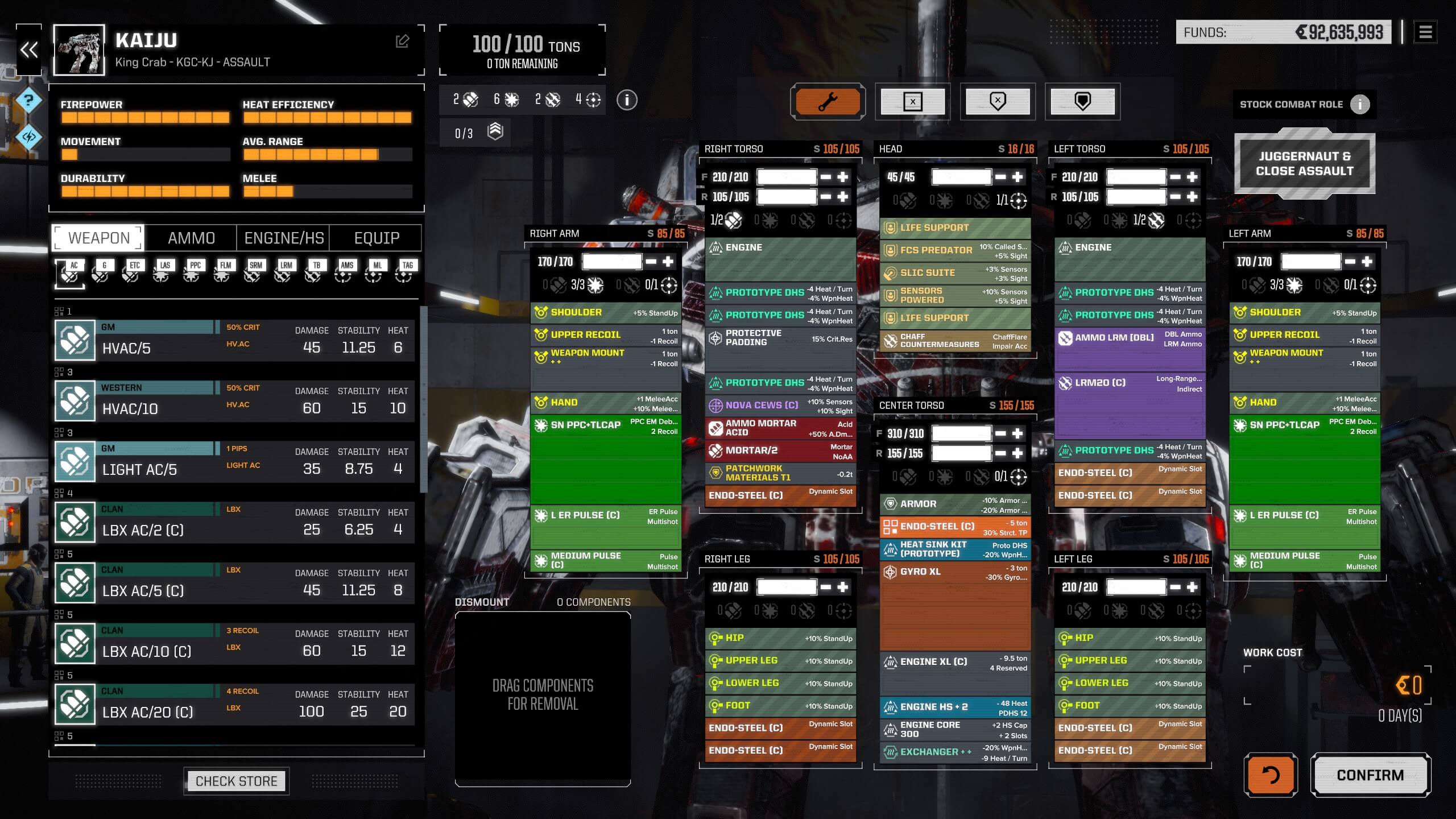
Fafnir(FNR-5X) Assault Sniper.

Kaiju(KGC-KJ) Assault Sniper v2.

Kodiak(KDK-1) Assault Sniper.

These are five different builds where the Gungnir trades in range for long-range damage and is only slightly modified from the original Gungnir build and is a rare version of the Marauder heavy mechs. Whereas the Kaiju is a rare version of the King Crab and offers a lot of punch through the twin-linked P.P.C.'s and Large ER Pulse lasers but can close in and dual purpose as a brawler as well as an acid debuff through the mortar/2 important to note here that the Mortar is there purely for the Debuff and not damage output by itself. With recent changes, the Kaiju lost the ability to fit certain arms mode that would aid in sniping. As a result, the Kaiju is now only viable as a sniper with lasers and L.R.M.'s. The Kodiak can replace the role of the Kaiju with the same loadout while fielding the arm mods to balance Recoil. The Fafnir is built around extreme-range sniping with hyper-assault gauss rifles and two large E.R. laser too round of the damage. What is also very important is to use regular mechs that allow you to fit arms mods to gain accuracy and reduce Recoil this will greatly increase your hit % at long to extreme ranges. Since those mods are fitted on arms weapons should be fitted in the arms where possible with support weapons and ammo storage fitted in the side torsos.
Lance A.M.S.
This evolves around sacrificing some tonnage on a mech to fit the advanced A.M.S. system with plenty of ammo to reduce incoming missile damage allowing other mechs to use their tonnage towards other equipment. Only the Advanced A.M.S. system will intercept incoming fire at all friendlies there is a Pirate version of a laser A.M.S. that also allows for lance A.M.S., but it is tough to come by and has a relatively low intercept chance. These platforms are best suited for short to mid-range weapons I moved some of my lance A.M.S. to my cooker mechs and melee mechs however I retain one specialized build for lance A.M.S. due to the nature of the mech making is perfect for a lance A.M.S. build. Below one screenshot of my Kracken assault lance A.M.S.
Kracken(AS7-KR) Lance AMS.

A simple build centred around supporting the whole lance with A.M.S., a Command Console, and damage. The Atlas and variants due to the lack of weapon hardpoints are well suited for this role. As well as offering long to short-range weapons it is more than capable of taking on other assault mechs on its own.
Damage Brawlers.
These builds are for dealing damage and soaking up damage and are always better at close ranges since the heavier weapons only have a short-range and optimal range on most other damage dealing weapons is mid-range as well as being able to hit better at close range due to the hit %. They also are very well suited for sensor stealth builds with good E.C.M. suites making them harder to hit while being able to switch to ECCM to be able to hit better to counter E.C.M. Also to consider here is to use of AX SRM missiles or the A.X. mortars rounds from support builds that would increase there overall damage output even further. Below three screenshots of my Gladiator heavy damage brawler, Dire Wolf assault damage brawler and, Lone Wolf assault damage brawler.
Gladiator(BL-S7) Heavy Damage Brawler.

Dire Wolf(DW-B) Assault Damage Brawler.

Lone Wolf(DW-LP-AP) Assault Damage Brawler.

Timber Wolf(TW-D) Heavy Damage Brawler.

Timber Wolf(TW-H) Heavy Damage Brawler.
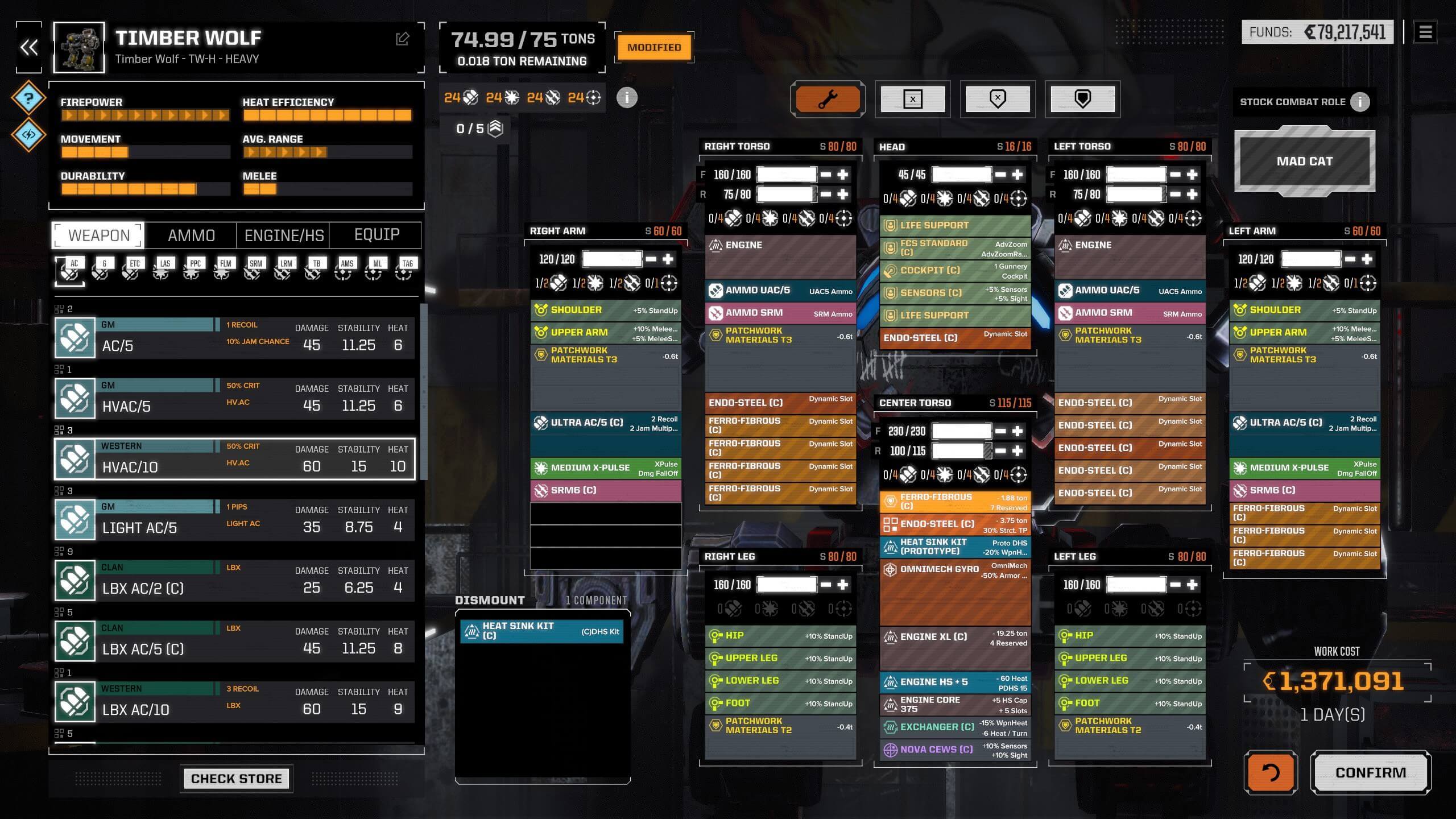
All five builds are centred around maximum damage while retaining full armour Omni mech are especially useful for this since they offer more tonnage for weapons while having more armour then let's say an Atlas. Since you do not have much in limb mods for Omni mechs you can use the Omnipod lower arm mod to gain some accuracy however this limits the use since no ballistic or P.P.C. weapons will fit in the Omni pods. The Gladiator is a reworked Black Knight as Solaris brawler and features special armour that increases the overall protection at double the weight and an internal structure mod that does not take up slot space while lowering the chassis weight as well as having an internal M.A.S.C. in the armour that can be turned on/off. Finally, the Gladiator does well over 300 damage and can even double as a long-range sniper with the RAC/2 weapons and arm mods. The Dire Wolf is an all-out laser build with some AX SRM's fitted to increase the damage output even further, and the damage is well over 600 without any buffs so it will crater any other assault mech it comes close. Due to the massive heat output, special armour and a special F.C.S. is fitted that helps with heat management. The Lone Wolf is a very rare Dire Wolf Omni mech that comes with special rotary gauss rifles I was unable to salvage more than 2, adding two more rotary gauss rifles and dropping some of the other weapons would be my preferred setup. But even now the build does well over 700 damage, and that is without any buff as well. It comes with a baked-in stealth armour and Nova CEWS ECM suite, special gauss F.C.S. and a Totem sensor suite. Both the Timber Wolves are to augment each other and field a 375 engine allowing them to close into optimal weapons range as well as flanking manoeuvres. The D variant was rebuilt to offer Long to Medium-range fire with about 345 damage output. In comparison, the H variant was designed around Medium to Short-range fire with about 374 damage output. Both use E.C.M. and Sensors with C3 networking through the Nova C.E.W.S. (C).
Light Mech Builds.
Many will start with light mechs with perhaps some medium mechs as well as some prefer a light and medium mech lance, so I decided to add some light mech builds. These are all made with the best components available at the time of writing this article. You can opt to work up to these builds or iterate upon them to suit your own needs. The light Mech builds below cover a wide range of capabilities and are best used in synergy within a lance since they do not offer the tonnage like heavier mechs to deal large amounts of damage. In general light mechs should be more operate as a wolf pack; therefore, they should supplement each other with damage, E.C.M. and C3 networking and spotting(TAG/NARC). Light mechs also tend to be very fragile when taking on heavy and assault mechs, so stealth armour is also a wise option to consider.
Raven(RVN-M) Stealth Light.

Wolf Hound(WLF-4WB) Damage Light.

Venom(SDR-9K) Flanker Light.

Fire Starter(FS-PM) Recon Light.

Fire Starter(FS9-S) Sniper Light.

A wide range of builds that can be switched out to complement each other or use a different light mech with similar hardpoints to fulfil the same role. The hardest part will be to crank out as much damage out of a light mech since so little tonnage is available hence why usually light Mech fulfil a support role and damage dealing is handled by heavier class mechs. However, some damage can be dished out but either requires pulse lasers and light P.P.C.'s with plenty of heatsinks or a long-range build but also is centred around lasers or P.P.C.'s with lowering the armour values to mount large lasers and ER PPC's. This Raven Stealth build is for visual, and sensor stealth making it an excellent spotter and comes with a baked-in E.C.M. and sensor suite. The NARC launcher is to mark targets for the rest of the lance or switch to its other support role and haywire and overheat a target. The Wolf Hound is a stealthy damage brawler with a mid to short-range, and this variant comes with a baked-in stealth armour and E.C.M. and sensor suite. The Venom is a highly mobile flanker that ideally get's behind a target and uses Ferro-Lammellor armour to get a damage reduction as well as a T.A.G. to support the rest of the lance. The Fire Starter Recon is similar to the Raven build above but also doubles as lance A.M.S. This build also features six flamers, stealth armour and a NARC/Haywire launcher to provide additional support to the rest of the lance. The Fire Starter Sniper is a variant that uses E.R. large and medium lasers to deal damage at a distance with a light mortar to provide an acid debuff to hostile mechs. The Ferro-Lammellor is to offset the lower armour values; it takes up equipment slots and not tonnage. All these builds, however, use C3 networking either through the Nova C.E.W.S. or Sensor Recon to share information to gain hit % to make every shot count. Lastly, all but one build feature jump jets for better positioning as well as the high ground offers an increased hit %.
Medium Mech builds.
Medium mechs could be used to early-game or late-game for specific mission types or farm mission for C-Bills and parts that have a low skull rating, therefore, have a lower payout and Assault or Heavy Mech would cost more then you would earn. Medium mechs will work best if you use a similar playstyle then Light mechs. The added bonus is more tonnage for more armour and weapons while being able to maintain a similar speed but more comfortable to detect.
Guerilla(BSW-S7) Damage Medium.
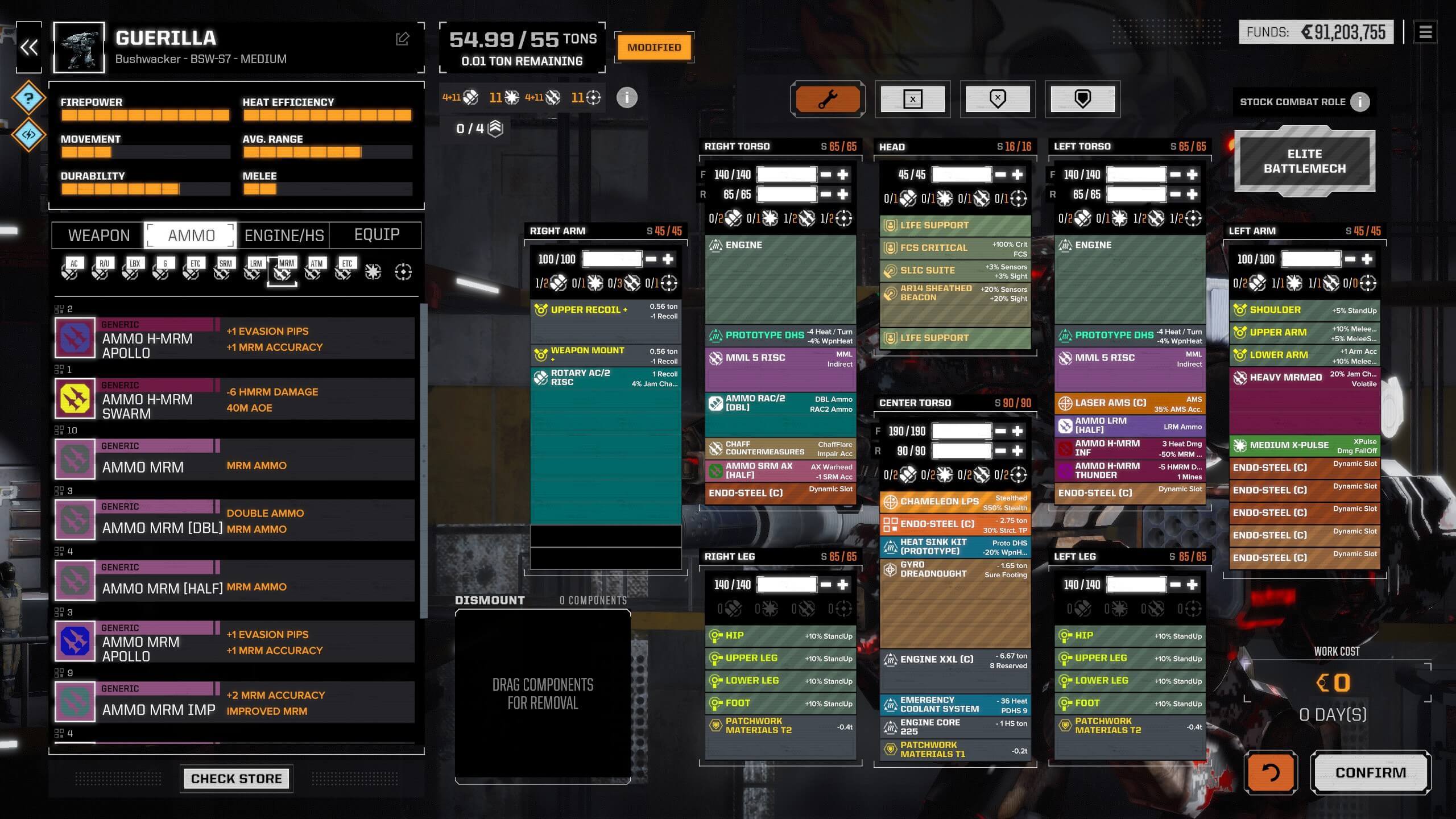
Storm Crow(SCR-G) Medium Flanker.

Storm Crow(SCR-Z) Medium Damage.

These three medium mech builds are all centred around dealing damage either moving in together directly or flanking. And they are then disengaging to pick off the next isolated target. The Guerilla is a rare variant of the Bushwacker with lostech and is stealthy to unload it full payload from almost point-blank range doing over 300 damage. It also fits some cluster mine munition to make short work of light mechs and their limbs. The ultra-rare RISC R/AC2 and Heavy MRM20 deal an immense amount of damage but only in close range. The ultra-rare RISC MML5 launcher fire both L.R.M. and S.R.M. munitions are giving you the option for variable range D.P.S. Both Storm Crows are built around D.P.S. while the G Variant is built around flanking with Ulta AC5's and jump jets. The Z Variant is built around A.T.M. launchers. Both Storm Crows use E.C.M. and Sensors with C3 networking through the Nova C.E.W.S. (S).
Happy hunting!












































